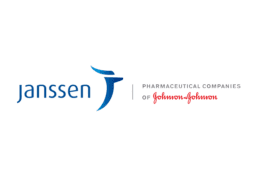 Janssen’s Stelara (ustekinumab) was associated with a rate of safety events similar to that of placebo during the control phase of a range of clinical trials.
Janssen’s Stelara (ustekinumab) was associated with a rate of safety events similar to that of placebo during the control phase of a range of clinical trials.
The Johnson & Johnson (NYSE:JNJ) subsidiary shared the data related to adults 60 and older at the virtual United European Gastroenterology Week (UEGW). The study pooled safety data from 13 clinical trials across approved indications, including Crohn’s disease, ulcerative colitis, plaque psoriasis and psoriatic arthritis. The analysis included data for up to five years.
“This particular analysis builds on the complete data we have on the safety of Stelara over thousands of patients and literally dozens of clinical trials over 20 years now,” said Dr. Andrew Greenspan, vice president of medical affairs at Janssen Immunology.
The analysis is also noteworthy in its focus on patients 60 and older, Greenspan said.
“Often, we limit patients who are older from the clinical trials, and that’s not what we did in our program,” he said.
This is because older patients can have higher rates of disease complications, and the safety profile for various drugs can be different in older adults than the rest of the population. Yet “often there’s not a robust data set of evidence looking at the safety profiles in these older folks,” Greenspan said.
Pulling data from 13 studies, the analysis included data from a long-term extension of the psoriasis program for five years, a five-year Crohn’s disease study and a three-year ulcerative colitis program, among others.
 The initial portion of these studies was placebo-controlled. Adverse event rates between the Stelara and placebo groups were similar.
The initial portion of these studies was placebo-controlled. Adverse event rates between the Stelara and placebo groups were similar.
“This is reassuring because physicians do have heightened concerns about the safety of their drugs in older patients,” Greenspan said.
The analysis had less data from placebo recipients than patients receiving Stelara. The various studies included in the analysis had multiple years’ worth of data for Stelara recipients, whereas “often we only have maybe six months or even less of a placebo control,” Greenspan said. As a result, the analysis adjusted for the duration of the treatment.
The analysis found no increased risk of malignancy in Stelara recipients based on comparing observed versus expected malignancies using data from the Surveillance, Epidemiology and End Results (SEER) program.
“Malignancy is one of the biggest concerns for patients and physicians with all biologics across different classes for autoimmune diseases,” Greenspan noted.
The package insert for Stelara warns of the potential risk of malignancy.
“While we do acknowledge the risk is in our packaging, we provide the data to physicians so they can make an informed decision since it’s one of the driving concerns of patients,” Greenspan said.
While the analysis is the first examination of safety events in adults 60 and over, it did have some statistical limitations. Namely, the confidence intervals between the drug and placebo groups in the analysis overlapped.
“And what that means is that you really can’t conclude that they’re significantly different,” Greenspan said.
Instead, Janssen interpreted the data to mean that the Stelara recipients and placebo group had similar rates of safety events.
“And that’s been consistent with what we’ve seen across all of the different studies,” Greenspan said.
Filed Under: Gastroenterology, Rheumatology




Tell Us What You Think!
You must be logged in to post a comment.